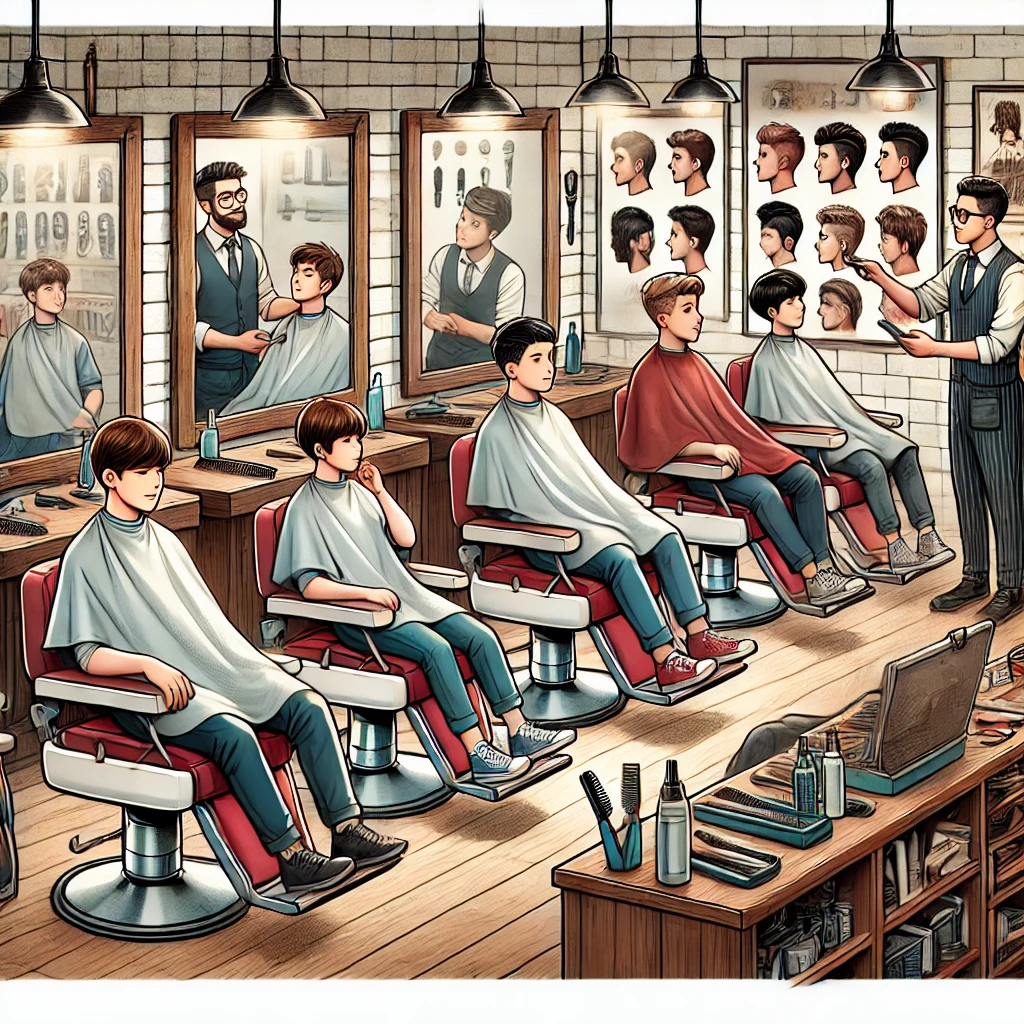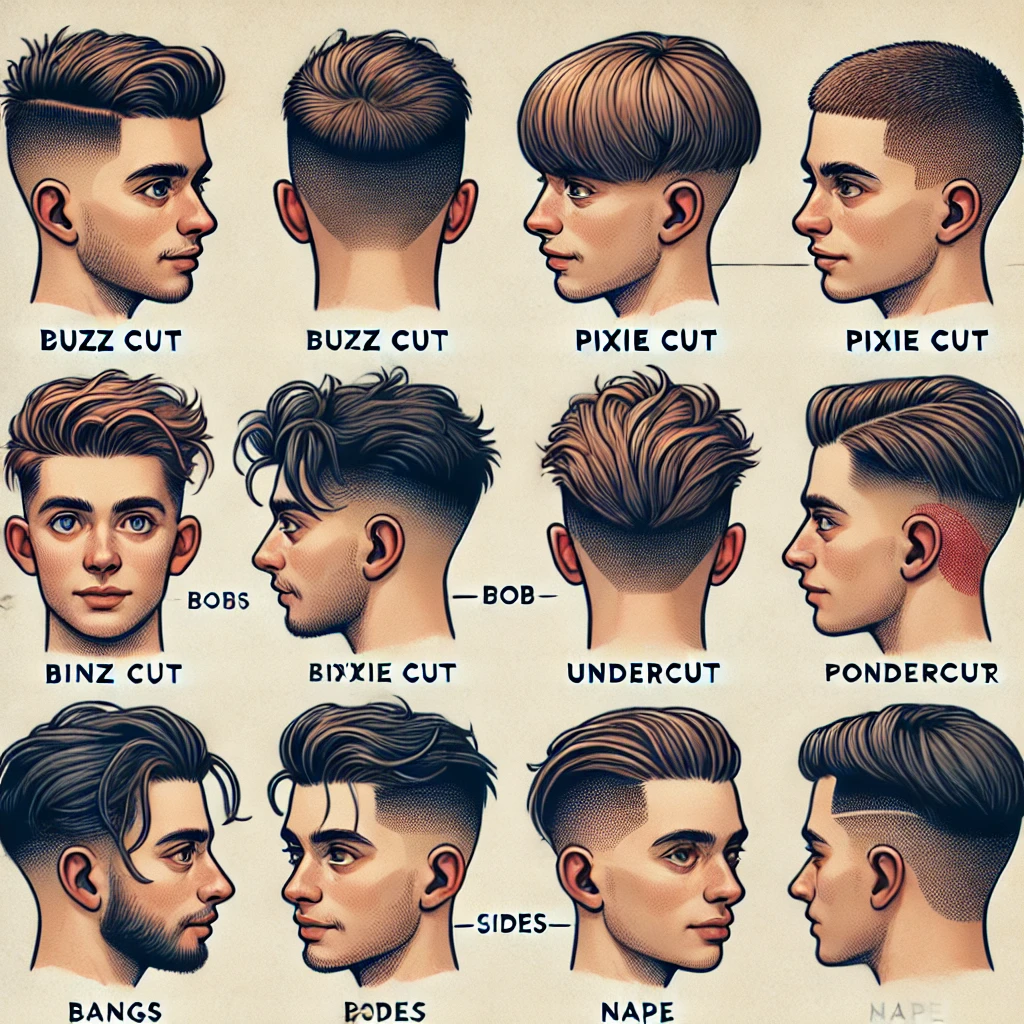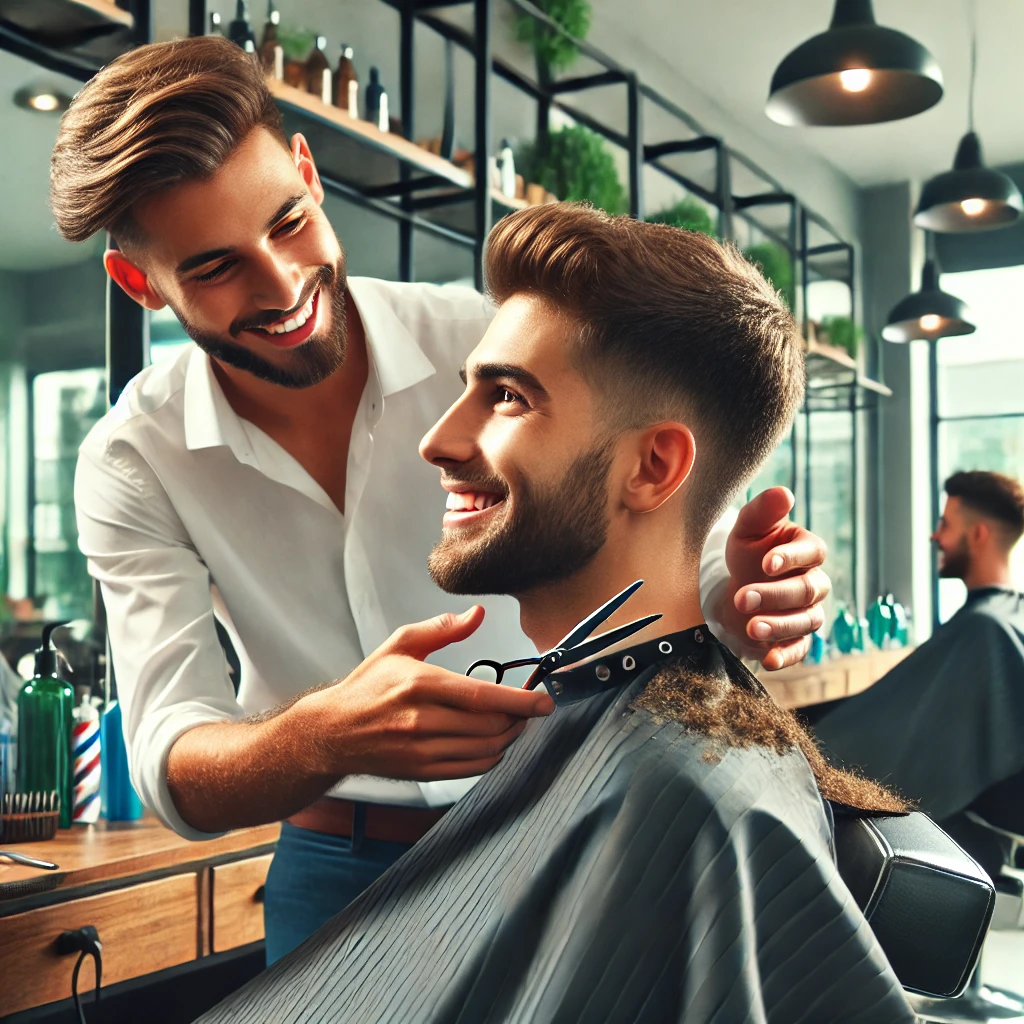Want to improve your intermediate ESL conversations at the barber shop? This guide is perfect for you! We’ll show you 3 essential English conversations at the barber to boost your intermediate English skills. Learn how to discuss hairstyles and chat confidently during haircuts. We’ve got practical examples and useful phrases for immediate use. These intermediate ESL conversations are great for everyday practice, whether you’re learning solo or in class. Ready to enhance your language skills? Let’s dive into these effective intermediate barber shop ESL conversations!
Introduction to Intermediate ESL Conversations at the Barber
Intermediate ESL conversations can be challenging, especially in specific settings like a barber shop. This guide focuses on essential intermediate ESL conversations you need to know for your next haircut. We’ll explore three crucial dialogues that will boost your confidence and English skills in this common yet often intimidating situation.
Before we dive into the specific intermediate ESL conversations, let’s watch a video demonstrating a typical barber shop interaction:
Video Lesson: Barber Shop Conversations
As you watch, pay attention to the vocabulary and phrases used. These will form the basis of the intermediate ESL conversations we’ll be practicing.
Now, let’s explore the three essential conversations every ESL learner should master for their barbershop visits. These intermediate ESL conversations will help you feel more confident during your next haircut.
Check out our Hair Salon English Conversations here or watch it on YouTube here.
Intermediate ESL Conversation 1: Describing Your Desired Haircut
One of the most crucial intermediate ESL conversations at the barber is accurately describing the haircut you want. This conversation requires specific vocabulary and the ability to communicate your preferences clearly.
Key Phrases for Describing Your Haircut
- “I’d like a [style] haircut, please.”
- “Could you [action] my [hair part], please?”
- “I want something [adjective]. What do you suggest?”
Example Intermediate ESL Conversation
Client: Hello, I’d like to get a haircut today.
Barber: Welcome! Take a seat. What kind of cut are you looking for?
Client: I’m thinking of a tapered cut with a rounded neckline.
Barber: Sounds good. How short do you want it on the sides?
Client: I’d like it quite short on the sides, maybe a number 2 with the clippers?
Barber: Got it. And for the top?
Client: Leave it a bit longer on top, please. I like to style it with some product.
Barber: No problem. Do you want me to trim your sideburns as well?
Client: Yes, please. Could you keep them at about mid-ear length?
Barber: Certainly. Anything else?
Client: That should do it. Thanks!

Intermediate ESL Conversation 2: Discussing Hairstyle Trends
Another important aspect of intermediate ESL conversations at the barber is discussing current hairstyle trends. This conversation allows you to express your interests and learn about new styles.
Key Phrases for Discussing Trends
- “What styles are popular right now?”
- “Do you think [style] would suit my face shape?”
- “I’ve seen a lot of people with [style]. What do you think about it?”
Example Intermediate ESL Conversation
Client: I’ve been thinking about trying a new style. What’s popular these days?
Barber: Well, we’re seeing a lot of guys go for the textured crop or the modern pompadour.
Client: Interesting. Could you explain what a textured crop is?
Barber: Sure, it’s a short haircut with lots of texture on top. It’s pretty low maintenance but still looks stylish.
Client: That sounds good. Do you think it would suit me?
Barber: I think it would look great on you. Your hair type is perfect for it.
Client: Alright, let’s give it a try. How do I style it at home?
Barber: It’s easy. Just use a bit of matte clay or pomade, run it through your hair, and tousle it with your fingers.
Client: Sounds simple enough. I’ll take your advice!

Intermediate ESL Conversation 3: Making Small Talk During Your Haircut
Making small talk is an essential part of intermediate ESL conversations at the barber shop. This skill helps you build rapport with your barber and practice casual English conversation.
Key Phrases for Small Talk
- “How’s your day going so far?”
- “Have you been busy at the shop lately?”
- “Did you catch the [sports team] game last night?”
Example Intermediate ESL Conversation
Barber: So, how’s your day going so far?
Client: It’s going well, thanks. Been a busy week at work, so it’s nice to take a break and get a haircut.
Barber: I hear you. What line of work are you in?
Client: I’m in IT. Lots of problem-solving and long hours in front of the computer.
Barber: Sounds challenging. At least you’re looking after yourself by getting a fresh cut.
Client: You know it. How about you? Have you been busy at the shop lately?
Barber: Yeah, it’s been pretty steady. Summer’s always a busy time for us.
Client: I can imagine. People want to look good for their vacations, right?
Barber: Exactly. Speaking of which, got any plans for the summer?
Client: Thinking about a beach trip next month. Nothing set in stone yet, though.
Barber: Sounds nice. Well, wherever you go, you’ll be looking sharp with this new cut!

Key Vocabulary for Barbershop Conversations
To help you navigate these intermediate English conversations at the barber, here’s a list of essential vocabulary:
- Blocked: A hairstyle where the back and sides are cut to the same length
- Rounded: A curved shape, often referring to the neckline
- Tapered: Gradually narrowing towards one end
- Clippers: Electric hair cutting tool
- Arches: Curved shape above the ears
- Sideburns: Hair grown down the sides of a man’s face
- Buzz cut: Very short haircut using clippers
- Low maintenance: Requiring little effort to maintain
- Fade: A gradual transition from shorter to longer hair
- Texture: The feel or appearance of hair (e.g., smooth, rough, layered)
- Pomade: A hairstyling product used to create shine and hold
- Neckline: The line where hair ends at the back of the neck
Common Phrases Used at the Barber
Familiarize yourself with these common phrases to sound more natural during your barbershop visits:
- “You know me better than that.”: Expressing familiarity with the barber
- “Alright, nice and to the point…”: Acknowledging a direct request
- “You know it.”: Agreeing emphatically
- “I hope you can handle this….”: Playful challenge or joke
- “You’re looking a little rough around the edges there.”: Suggesting someone needs a haircut
- “Just a trim, please.”: Requesting a minor cut to maintain current style
- “How short do you want it?”: Asking for specifics about hair length
- “Do you have any product recommendations?”: Seeking advice on hair care products
Practice Exercises #1
To reinforce your learning, try these practice exercises:
- Role-play each of the three conversations with a friend or language partner.
- Write your own dialogue incorporating at least five new vocabulary words from this lesson.
- Record yourself describing your ideal haircut, then listen back and identify areas for improvement.
- Create flashcards with the key vocabulary and common phrases to review regularly.
- Next time you visit a barber, challenge yourself to use at least three new phrases from this lesson.
Remember, practice makes perfect! The more you use these words and phrases, the more natural they’ll become.
Practice Exercise #2
Try using these new words and phrases in your own sentences. For example:
- “I’d like a ___ (blocked/rounded/tapered) cut, please.”
- “Could you trim my ___ (sideburns/arches) a bit?”
- “I want something ___ (low maintenance). What do you suggest?”
Practice these sentences and try to use them the next time you visit a barber!
Conclusion
Mastering these three must-know intermediate English conversations at the barber will significantly boost your confidence and fluency in real-life situations. By learning the specific vocabulary, practicing common phrases, and preparing for typical barbershop interactions, you’ll be able to communicate your needs effectively and even enjoy some casual conversation during your next haircut.
Remember, language learning is a journey, and every conversation is an opportunity to improve. Don’t be afraid to make mistakes – most people appreciate the effort you’re making to speak their language.
We encourage you to put these new skills into practice as soon as possible. Why not book your next haircut appointment today and try out some of these conversations?
For more helpful ESL lessons and to continue improving your English skills, don’t forget to subscribe to our YouTube channel @EnglishPhraseCamp. We regularly post new content to help you on your language learning journey.
What was your most challenging barbershop experience in English? Share your story in the comments below, and let’s learn from each other’s experiences!
Ready to take your English skills to the next level? Sign up for our free weekly ESL newsletter and receive exclusive tips, practice exercises, and video lessons directly in your inbox. [Click here to subscribe now!]


